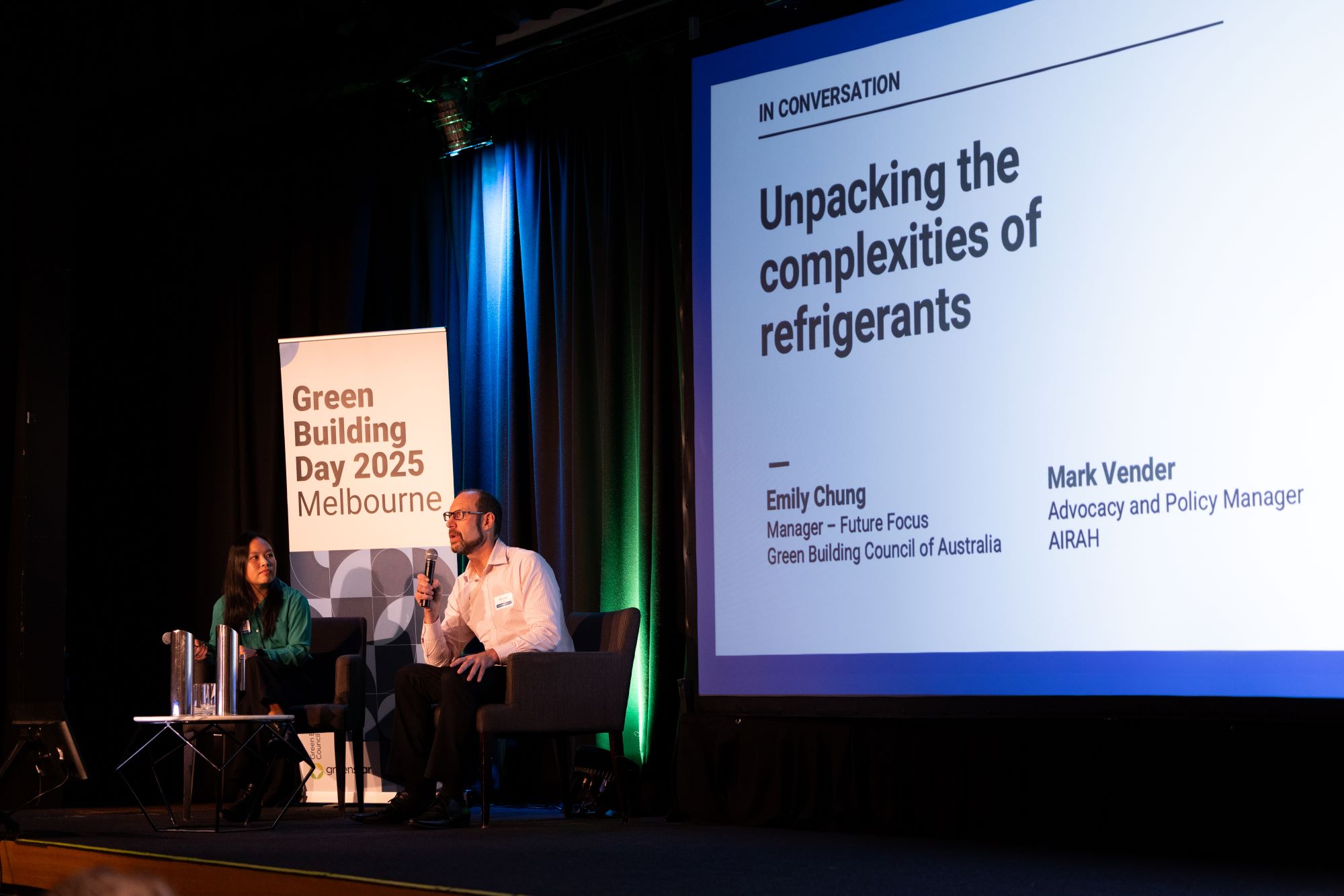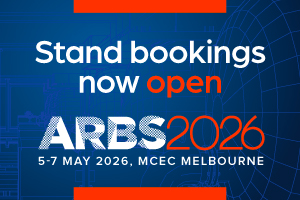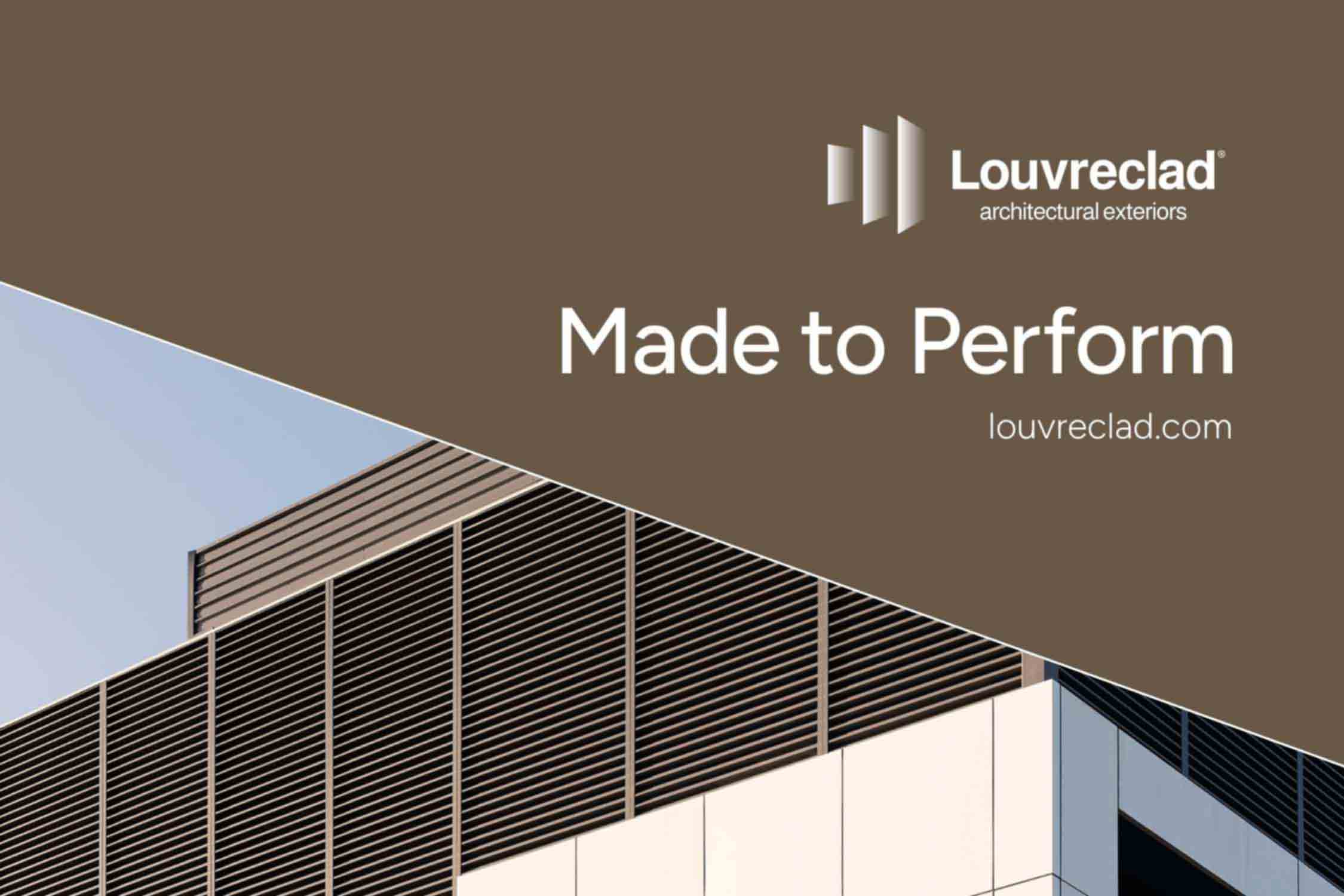Painting the plant room green
Refrigerants were in the spotlight at Green Building Day this year. AIRAH’s Advocacy and Policy Manager Mark Vender shares his perspective from the Melbourne event.

Over May and June, the Green Building Council of Australia held its much anticipated Green Building Days across the country. The events are renowned as showcases of best practice, with case studies on innovative projects and emerging ideas on how to shift the dial on sustainability. This year, one topic stood out as a little different to the usual fare: unpacking the complexities of refrigerants.
The sessions were partly prompted by a discussion paper that the GBCA and AIRAH are collaborating on. With support from key stakeholders in the built environment sector, the project seeks to open the conversation about refrigerant selection to those who can drive change: property owners, developers and consultants.
Across the various events, AIRAH members and collaborators took the stage to spellbind audiences by talking about invisible, odourless gases with weird names like R1234yf. Sound like a challenge? You bet!
After presenting at the Melbourne event with Emily Chung from the GBCA, here are some of my key takeaways …
People like HVAC&R puns
Emily encouraged me to insert some jokes, so I told the audience how I came to the HVAC&R industry cold but quickly realised there was heated debate about refrigerants, and that many of our members were venting their frustrations. And of course, I highlighted that choosing the right system offers many fridge benefits.
One of the difficulties in talking about refrigerants is the mental barrier: how much can you explain before people get lost in the detail?
As well as introducing some humour, the GBCA team has encouraged those of us in the HVAC&R world us to think more like building owners: to talk less about refrigerants and more about systems and buildings.
Grab the levers for change
As prominent businessman Charlie Munger once said: “Show me the incentive and I’ll show you the outcome.” Ratings systems like Green Star are designed to incentivise more sustainable practices in the building industry, and they have been very successful in doing so.
The GBCA is looking for levers in the plant room. It recently consulted with industry on proposed changes to the Green Star Buildings rating system, including the introduction of a new credit for “future-ready refrigeration equipment” to complement the existing incentives. The discussion paper also promises to raise end-user awareness about refrigerants.
That said, ratings can be achieved using different credits, and the feeling I got from talking to audience members in the breaks was that the refrigerant credit was not among the most commonly sought.
So if it isn’t necessarily going to affect how many stars their building gets, why should building developers care about refrigerants?
Focus on the here and now
To begin with, there’s the matter of mandatory disclosure of sustainability and climate-related information, which for the largest companies began in January this year. Under the new rules, companies will report their greenhouse gas emissions, including Scope 1 (direct), Scope 2 (indirect from energy) and Scope 3 (indirect, up and down the value chain) emissions.
As buildings are electrified and gas-powered appliances are phased out, Scope 1 emissions from onsite fossil fuel use decrease. But at the same time, more equipment containing refrigerants is installed, and direct emissions from this equipment become more conspicuous. The NSW Net Zero Commission’s 2024 Annual Report found that refrigerants were the second largest and fastest growing source of emissions in the built environment.
Refrigerants are on the radar.
Manage the change
The other big issue today is the shifting refrigerant landscape. In previous transitions, for example from CFCs to HFCs, the path was relatively clear. At those times, AIRAH produced refrigerant selection guides that helped end-users choose the right options.
Now the future is not so certain.
There is a strong movement from synthetics to naturals – Europe has charted a course away from fluorinated refrigerants. There are also concerns about the upstream and downstream environmental impacts of some HFOs.
Interestingly, although these issues have been exercising our industry for years, many building developers, owners and consultants are unaware of them.
The Green Building Day session was an opportunity to describe the state of play and point out that a building lasts much longer than an HVAC system – building owners should consider what options might be available when it’s time to replace equipment. Will their building accommodate central plant running on A3 refrigerant, for example, if they have to switch in 15 years?
Time to start the conversation
It’s important that end-users have a better understanding of the equipment and refrigerants selected for their buildings. The sessions at the Green Building Day events – like the coming discussion paper – aim to engage the demand side of the industry in this process.
It’s true, the language of refrigerants is complicated for the outsider. If we start talking about GWP, HFCs, TFA and A2Ls, it’s easy to lose the audience.
But we can give them some questions to put to the supply side of the industry. As the customer, they play a vital role in determining what products are offered to market. We can also offer a risk-based framework to navigate the different options.
Perhaps the simplest starting point for owners and developers is a single question: in a world of changing refrigerants, will their building be future-proof?
PREV
NEXT
Comments
Advertisements
Recent news
- 2025 AIRAH National Awards: Stefan Jensen, L.AIRAH, wins WR Ahern Award
- 2025 AIRAH National Awards: Brett Fairweather, F.AIRAH, wins Excellence in Knowledge Building
- 2025 AIRAH National Awards: Rising Stars of the HVAC&R Industry
Latest events
- 2025 AIRAH National Awards: Stefan Jensen, L.AIRAH, wins WR Ahern Award
- 2025 AIRAH National Awards: Brett Fairweather, F.AIRAH, wins Excellence in Knowledge Building
- 2025 AIRAH National Awards: Rising Stars of the HVAC&R Industry
 Mark Vender
Mark Vender

Leave a Reply